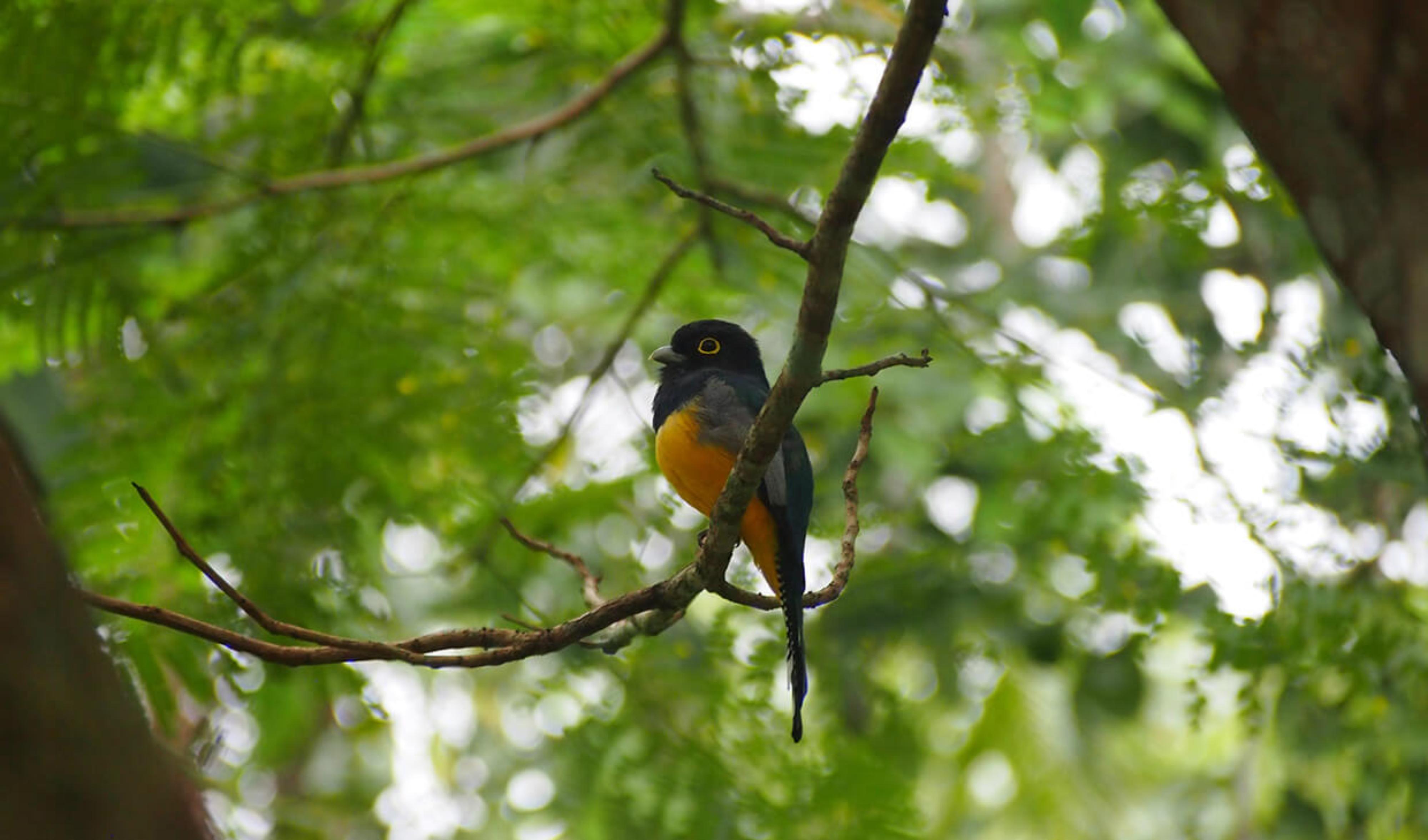Recovering forests important to conservation, study finds
Tropical forests recovering from disturbance could be much more important to the conservation of forest bird species than first thought, according to a new study.
/filters:format(webp)/filters:no_upscale()/prod01/cdn/media/stirling/news/news-centre/2019/february/Forest-1290X689.jpg)
Tropical forests recovering from disturbance could be much more important to the conservation of forest bird species than first thought, according to a new study.
The research, led by the University of Stirling, indicates that species extinctions caused by the destruction and degradation of tropical primary forests could be avoided if sufficient areas of secondary forest – those regenerating following logging or clearance – can be conserved.
The findings – published in Biotropica – challenge previous assertions suggesting that young secondary forests have low conservation potential.

Dr Rebekah Mayhew, an ecologist from the Faculty of Natural Sciences at Stirling, led the research, which involved colleagues from Imperial College London and the Smithsonian Tropical Research Institute in Panama. She said: “Despite many questioning the conservation value of secondary forests, we showed that they can be enormously valuable for birds when they are adjacent to extensive primary forests.
“After only two decades of growth, secondary forests connected to extensive primary forest can host diverse bird communities. Importantly, the overall pattern was similar with forest specialist birds. These birds are restricted to high-quality forest habitat, and are often used as an indicator of forest conservation value.
“The capacity of secondary forests to increase populations of these species has positive benefits for a range of ecosystem services that help humans, such as predation of invertebrate pests and dispersal of plant seeds.”

Ecologist, Dr Rebekah Mayhew
Over half of tropical forests are categorised as secondary. However, when compared to primary forests, young secondary forests are typically dismissed as having low conservation potential.
Dr Mayhew and the team carried out research across 14 permanent forest survey plots in the Barro Colorado Nature Monument, close to the Panama Canal in Central America. The network is the most extensive chronosequence in the tropics, with plots aged between 20 and 120 years old.
The scientists compared bird diversity in primary and secondary forests in the region, with almost 14,000 birds detected over a three-year period.
Significantly, the team found that the benefits of secondary forests are strongly dependent on landscape context. Habitats isolated by inhospitable surroundings – such as forests isolated on islands – lack sufficient area to support viable populations of some rarer species, which tend to disappear over time.
In contrast, secondary forests can substantially boost populations of species surviving in adjacent primary forests, such as Soberania National Park, the main block of primary forest surveyed by the researchers. This effect may be due to increased abundance and availability of insects and fruits in some younger forests, which provide valuable foraging grounds for forest birds if connected to intact primary forest.

In other words, a smaller patch of old secondary forest (120 years old), isolated on an island, is not as beneficial to birds as a younger secondary forest (20 years old), located on the mainland and connected to extensive primary forest.
Dr Mayhew said: “Secondary forests are rarely protected, but our research provides a strong argument for their conservation potential.
“Our findings emphasise the importance of reforesting and maintaining existing secondary forest, particularly at the borders of extensive tropical forest, and highlight the need for improved protection of secondary forest in protected area buffer zones throughout the tropics.”
Research
The research, Connectivity with primary forest determines the value of secondary tropical forests for bird conservation, was developed with Dr Daisy Dent and Dr Lynsey Bunnefeld, of Stirling’s Faculty of Natural Sciences, and Dr Joe Tobias, of Imperial College London, in collaboration with Dr Jefferson Hall, director of the Agua Salud Project at the Smithsonian Tropical Research Institute, Panama.
It was part-funded by grants from the Natural Environment Research Council; The Carnegie Trust for the Universities of Scotland; and the Gilchrist Educational Trust.
